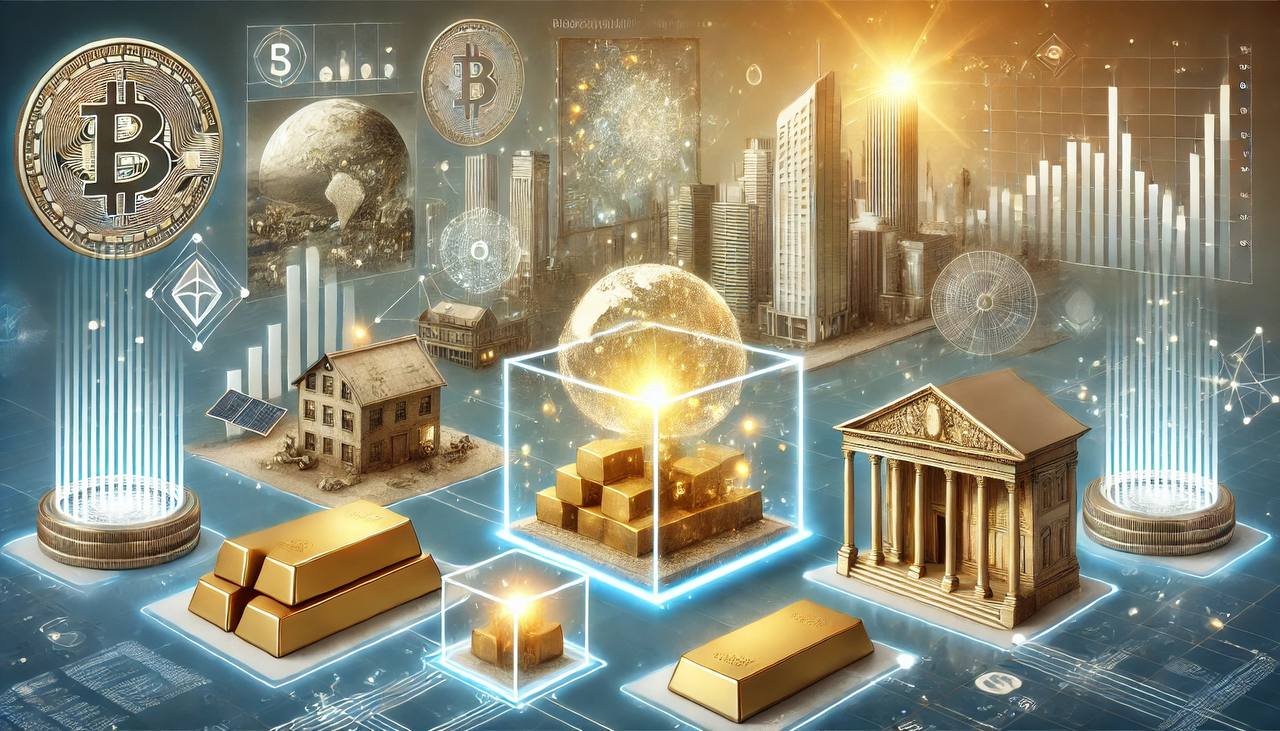Tokenization of real assets is the process of converting physical or non-physical objects into a digital form based on blockchain technologies. Essentially, tokenization allows a real-world asset to be represented as a digital token, which can be transferred, traded, and used in various financial operations. This concept holds immense potential to transform financial markets and increase asset accessibility for a broader audience.
Tokenization involves creating digital tokens that represent shares or entire objects, such as real estate, stocks, gold, or even works of art. These tokens can be created on a blockchain platform, ensuring their security, transparency, and immutability. Blockchain is the ideal technology in this context, as it guarantees the integrity of records, decentralization, and the availability of information about all transactions.
Advantages of Asset Tokenization
1. Simplified Access to Markets
One of the most attractive aspects of tokenization is its ability to make markets more accessible. For example, real estate investment, which traditionally requires substantial capital, can be made available to a wider range of investors by dividing the value into smaller portions through tokens. This also promotes a more efficient distribution of capital, as numerous investors can own shares in assets that were previously only accessible to large players.
2. Liquidity
Tokenization significantly increases the liquidity of assets. Thanks to the ability to quickly transfer tokens between participants on a blockchain platform, assets that traditionally have low liquidity (such as art or commercial real estate) become tradable on broader markets. This opens up new opportunities for fast transactions, which is beneficial both for investors and asset owners.
3. Reduction in Transaction Costs
Blockchain allows for a significant reduction in transaction costs by eliminating intermediaries such as banks, notaries, or brokers. This can reduce the time and cost of completing deals, making financial operations more advantageous and efficient for all participants. Moreover, process automation via smart contracts reduces the likelihood of errors and fraud.
4. Increased Transparency and Security
Blockchain ensures the immutability and transparency of all transactions, significantly reducing the risks of fraud. All data regarding transactions and the status of assets is available for verification and audit in real-time, which enhances participants’ trust in the system. Additionally, the use of smart contracts helps guarantee that the terms of deals are fulfilled without third-party involvement.
Examples of Asset Tokenization
1. Real Estate
Tokenizing real estate allows the value of properties to be divided into smaller shares, so even investors with limited capital can purchase a stake in a property. For example, if a property is valued at $1 million, it could be divided into 1 million tokens, each worth $1. This allows many investors to participate in a single project, increasing the accessibility and liquidity of the real estate market.
2. Securities and Stocks
Tokenizing securities enables the creation of digital analogs of company stocks that can be quickly bought or sold on blockchain markets. An example would be tokenizing shares of large companies, where the company creates tokens representing its shares and lists them on blockchain platforms for trading.
3. Art and Collectibles Tokenization
Tokenization is also actively used in the world of art and collectibles. Works of art, such as paintings, sculptures, and other unique items, can be tokenized, allowing many people to invest in their acquisition. For example, an artwork worth millions of dollars can be tokenized into thousands of shares, and each investor can buy a portion that suits their budget.
Challenges and Issues in Asset Tokenization
Despite its clear advantages, asset tokenization faces several challenges. One of the key issues is regulation. Currently, different countries have varying approaches to regulating cryptocurrencies and blockchain technologies. Differences in legal frameworks can create legal barriers to international trade of tokenized assets.
Additionally, ensuring ownership rights and proper identification of owners remains a significant issue. In some cases, particularly with physical objects, mechanisms for registering and verifying ownership rights need to be created, and these must be integrated into the blockchain.
Conclusion
The tokenization of real assets is a revolutionary approach that can transform financial markets, making them more accessible, liquid, and transparent. Leading blockchain platforms and financial companies are already actively working on creating solutions for tokenizing various types of assets, and in the coming years, this technology is likely to become an integral part of global financial markets. However, for tokenization to become mainstream and truly change the economy, harmonization of regulations and broader adoption of this technology, both by government bodies and financial institutions, will be necessary.




